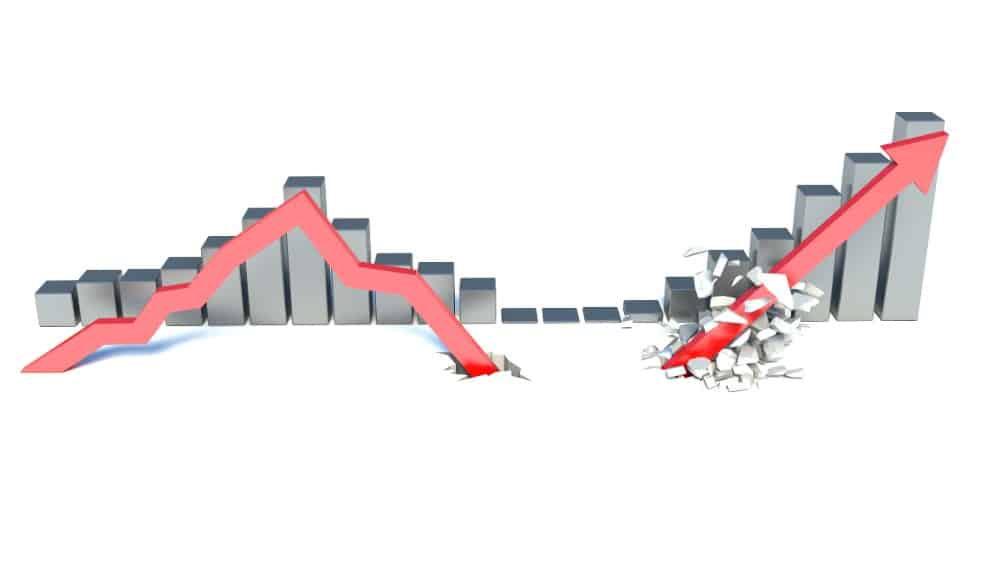Let’s say you have been in the stock market for quite some time and played the safe bets with index funds and ETFs, Dividend Aristocrats, and large-cap stocks. You have earned the market return. Now, you want to up your game and take some risk but in a controlled environment. As an intermediate investor, I would suggest you diversify your portfolio and dive deeper into asset allocation.
How asset allocation impacts your returns
Many investors jumped into the Lightspeed POS’s (TSX:LSPD)(NYSE:LSPD) stock price rally early in August 2020 and saw their money almost triple in a year. While they were happy with their decision, they regretted investing very little in the stock. Those who invested in Facedrive (TSXV:FD) a year back saw their money halve. They were happy that they invested only a small amount and limited their portfolio losses.
This is where smart asset allocation comes in. In my previous article for beginners, I talked about setting realistic expectations. Don’t expect growth from a dividend stock or an index ETF to beat the market. Now, it is time to set realistic expectations from your portfolio. Remember that high-growth stocks come with risk. Their fundamentals may look good, but the real test is if they can sustain this growth.
I will take the case of Lightspeed and Facedrive and show how you can turn the tide in your favour.
Lightspeed POS stock
Lightspeed launched its initial public offering (IPO) in March 2019 with an annual revenue-growth rate of over 35%. At that time, the concept of an omnichannel platform targeting a niche market of small- and mid-sized retailers looked good and attracted investor attention. The company was growing steadily through acquisitions and innovation, both of which focused on one goal: equipping merchants with the tech of big retailers.
But investors knew it is a high-risk business that could go either way. Lightspeed is a small player challenging the retail giants like Amazon, Shopify, and Walmart. Lightspeed had years to go before it could see a profit. While revenue growth was there, its losses made investors panic in the pandemic crisis, and the stock dropped 63%. Even I wouldn’t have recommended buying the stock at that time. But it was only in May 2020 that statistics showed improvement, and Lightspeed suddenly saw an uptick in subscriptions. This was a make-or-break time for the stock, as the business was scaling, and Lightspeed handled it efficiently.
It accelerated its innovation and acquisition to address the issues customers faced. The last year made Lightspeed a unicorn that kept beating its target, and it continues to beat it post the pandemic. The company has future catalysts like recovery in the hospitality sector and growing penetration of Lightspeed Payments. As Lightspeed proved itself in the crisis, any dip in the stock price came as an opportunity to buy.
Lightspeed stock dipped below $75 in March and May 2021 due to seasonal weakness. That was a good buying point, and those who did their research grabbed this opportunity.
Facedrive stock
Facedrive launched its IPO in September 2019 and started as a ride-sharing company. The initial numbers were remarkable. But then it lost track in 2020, and the company ran to any place where it saw money. It then lost its focus and started food delivery service and then moved to verticals like social, health, and marketplace. It just tried to put all its business under one umbrella of “environment first” and did a poor job at it.
In the rush to do too many things, Facedrive lost track of its core business of ride sharing. The revenue from core business fell 85%, and food service contributed 82% of revenue in the first quarter. When a business is doing poorly, it reflects in customer dissatisfaction. The Facedrive reviews on Google Playstore were the first sign of its failure. I became bearish on the stock in March 2021 when the stock dipped 57% from its all-time high.
How to turn mistakes into opportunities
There is no point staying invested in Facedrive. It is not a cheap value stock that will rise like a phoenix. Withdraw your money and invest it in BlackBerry or Lightspeed. These stocks could double in three to five years and recoup your Facedrive losses.










